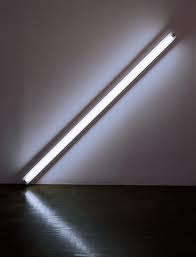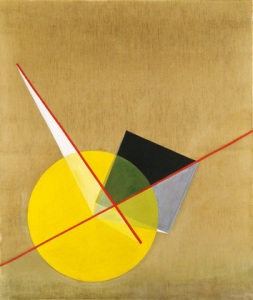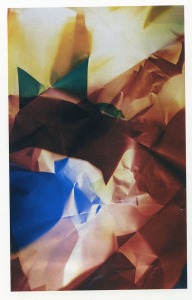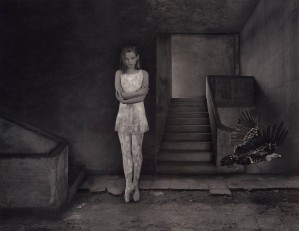In the first half of the 1960’s, Minimalism was decisive in bringing back into sharp focus, for the first time since the 1930’s, the general problem of how a work of art could validate itself as an object among all other objects in the world.
Jeff Wall
In essence, all photographs are conceptual. Since the invention of photography, photographers have prefaced the release of their shutter with a pre-conceived idea, (albeit conscious or semi-conscious) about the photographic image they were about to create. This was true whether or not the intent was to document accurately the subject in front of the camera, or something more complex. A clear example of this can be seen in the images taken by Ansel Adams of American Western landscape, which were carefully “pre-visualized” using his zone theory. 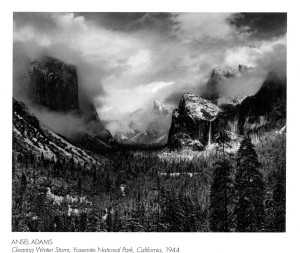 John Szarkowski, in his introduction to The Photographer’s Eye, referred to the conceptual aspect of photography when he called it “a radically new picture-making process, a process based not on synthesis but on selection”. By selecting among the various tools available, (i.e. quality of light, shadow, angle of view, line, form, perspective, etc.), photographers were creating photographs based on a concept. Even the seemingly “chance” photographs by Garry Winogrand, taken very hurriedly and spontaneously on the streets of New York City, were the product of an idea. For Winogrand, the idea was that almost any photograph taken on the frenetic, fast paced, urban streets of New York City would produce an interesting, and sometimes rather astounding, photograph.
John Szarkowski, in his introduction to The Photographer’s Eye, referred to the conceptual aspect of photography when he called it “a radically new picture-making process, a process based not on synthesis but on selection”. By selecting among the various tools available, (i.e. quality of light, shadow, angle of view, line, form, perspective, etc.), photographers were creating photographs based on a concept. Even the seemingly “chance” photographs by Garry Winogrand, taken very hurriedly and spontaneously on the streets of New York City, were the product of an idea. For Winogrand, the idea was that almost any photograph taken on the frenetic, fast paced, urban streets of New York City would produce an interesting, and sometimes rather astounding, photograph.
This analysis, however, is not so much about the conceptual or intellectual basis of photography, as it is about a form of photography, referred to as Conceptual Photography, that was inherited from Minimalism, an art movement of the 1960’s and 1970’s. (Source).
The Roots and Theory of Conceptual Photography
It is difficult to find an agreed upon definition of Conceptual Photography, perhaps because there is none. In the summer of 2012, the publication Source produced a special issue on Conceptual Photography. Bits and pieces of a definition of “What is Conceptual Photography” appear in the four articles in the issue.
Sandra Plummer refers to the “self-referential” quality of contemporary conceptual photography and the fact that it produces an object “that shows evidence of its own making”. (Moholy-Nagy’s experiments with the photogram and Man Ray’s Rayograms seem to be early examples of this). Plummer refers to a conceptual photograph by Walead Beshty, 4 Sided Picture (Red/Green/Blue/Yellow), in which Beshty manipulates a sheet of paper in the darkroom process to create a three dimensional, color form.
She suggests that this picture is conceptual “because of the primacy of the idea of photography, and of the revelation or disruption of its mechanisms- rather than the aesthetic”. In a video series produced as an adjunct to the Special Issue of Source Magazine, What is Conceptual Photography, the artist John Hilliard states that Conceptual Photography refers “to work that is pre-conceived (rather than spontaneous) and contains ideas that can be retrieved by the viewer”. In the same video, Suzanne Mooney identifies another quality of Conceptual Photography as being that of openness or “ambiguity”.
There are, however, detractors of Conceptual Photography, including the critic Sean O’Hagan, who suggests that Conceptual Photography can be narcissistic and that “sometimes the idea over-rides everything else”, leaving an image that is uninteresting.
Sandra Plummer, along with the artist James Casebere, suggest that the narrative photography of the 1970’s was expressive, personal, emotional, auto-biographical and sometimes confessional, whereas Conceptual Photography, which followed afterwarads was anti-personal, anti-emotional, complex and ambiguous. (Source Video Series).
Jeff Wall, in his article Marks of Indifference: Aspects of Photography in, or as, Conceptual Art (1995), presents a scholarly analysis of Conceptual Photography and its position in the history of the medium. Wall begins with the contribution of Minimalism as the basis for conceptual art and posits that because of Minimalism conceptual photography “decisively realized itself as modernist art in the experiments of the 1960’s and 1970’s”. He states that one of the challenges faced by photography is that it “cannot find alternatives to depiction, as could the other fine arts”. This structural quality of photography produced a significant challenge for the medium in its effort to become “modernist art”. Wall examines two directions which photography took in trying to move “beyond the worn-out criteria for photography as sheer picture–making” including; moving from reportage to photo-documentation and facing the challenge of photography in dealing with amateurism and the processes of skilling and re-skilling of the artist.
Wall suggests that in order for photography to succeed as modernist it had to ” succeed in putting forward a new proposition or model of the Picture”, one which moved away from the tableaux like photojournalism of the past and towards a more dynamic image which was “a new kind of picture, utilitarian in its determination by editorial assignment and novel in its seizure of the instantaneous, of the news event as it happened.” Wall also states that photography, with its structural quality of depiction, could not follow “conceptualism all the way to the frontier”, but, in attempting to do so it succeeded in revolutionizing the concept of the Picture.
So, while Conceptual Photography has survived, it has not totally dominated the field.
While Conceptual Photography brings a new range of possibilities for the present and future, it must be stated that photography is first and foremost a visual medium and that it will continue to include a rich and broad range of interesting images incorporating elements of both depiction and conceptualization.
Categories: Uncategorized
